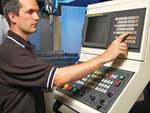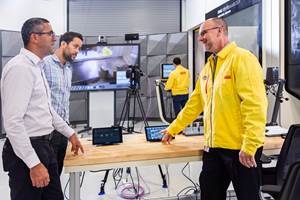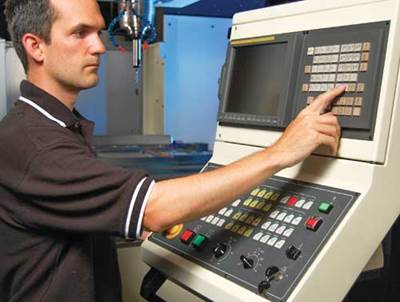RTI and On-the-Floor Learning
Finding, Training & Retaining Employees, Part 5
Apprenticeship training is the foundation of any viable skilled trade. The methods involved in the practice have evolved through the years, but with respect to the last 75 to 100 years, apprenticeship has always included some type of classroom instruction (often called Related Technical Instruction or RTI) combined with structured on-the-floor learning.
This approach shows respect to the diverse amount of hands-on experience and the depth of knowledge necessary to be successful in this industry. There are many different occupations in this industry that can use the apprenticeship system, but their requirements vary—a common breakdown of RTI to Shop Hours is 576 Related Instruction hours to 8,000 Shop Floor hours. In this article, we will explore some of the essential elements that are often incorporated into both portions of a modern apprenticeship program.
First, it should be understood that the RTI and shop floor experience should follow a somewhat parallel path. For example, the early portion of an apprenticeship program should include the most basic shop floor tasks and the most basic RTI classes. Depending on whether or not the apprentice has previous experience from a technical training school, this often means covering basic machining principles during the class time while at the same time having the apprentice do something at the skill level of machine set-ups, block-squaring or hole-making.
We have to be careful to not push the apprentice into advanced machining responsibilities before they are ready. Though the apprentice may not admit it, s/he may begin to feel overwhelmed and unprepared for his/her job. This may impact overall performance and perhaps even prompt them to quit the program or even their job.
When designing an apprenticeship program, the employer has a great deal of flexibility. Regarding the RTI, my number one recommendation is to ensure the classes that the apprentice takes are absolutely relevant to their job and career. Today that means incorporating elements of modern manufacturing in the RTI—such as classes on everything from Lean Manufacturing, Problem Solving and Advanced CNC Concepts to Leadership and Communication.
The RTI can be delivered in many modern ways as well. The employer could decide to have their local technical school provide the instruction or they could choose to teach the classes themselves internally. Of course there are excellent online resources available that more and more companies are incorporating. We will get into more details about the Related Instruction piece of the program in a future article.
As for the shop floor component of the apprenticeship program, again there is tremendous flexibility. This portion of the program is all about providing the apprentice with hands-on experience that you, as the employer, will consider important both in the short-term and in the long-term. The apprentice should have some exposure to nearly all jobs on the shop floor. This can include everything from benching/polishing, mold building and CNC operations to CAD/CAM and welding. Even if all the apprentice will do primarily is run a CNC machine, it is still critically important that s/he has exposure to the other responsibilities on the floor.
In upcoming articles, we will continue to break down the various elements of apprenticeship training. In the meantime, it may be helpful for you to sit with your management team and discuss how your company is training your employees. Start to make a list of the necessary job knowledge and skills for each position. This will help you determine how apprenticeship training can be used to sustain your workforce in the future.
Related Content
How to Foster Innovation Through a Culture of Education, Mentoring
Dynamic Tool Corp. shares its strategy for building a team with the right attitude and aptitude to deliver innovation that meets customer expectations.
Read MoreHow to Use Continuing Education to Remain Competitive in Moldmaking
Continued training helps moldmakers make tooling decisions and properly use the latest cutting tool to efficiently machine high-quality molds.
Read MoreConfronting the Mold Design Talent Drought
Recently, I reposted on LinkedIn the results of an informal survey we conducted, which revealed a shortage of skilled mold designers. It quickly gained a lot of traction. Given the response, I thought I'd summarize the feedback and keep the conversation going.
Read MoreMaking Mentoring Work | MMT Chat Part 2
Three of the TK Mold and Engineering team in Romeo, Michigan join me for Part 2 of this MMT Chat on mentorship by sharing how the AMBA’s Meet a Mentor Program works, lessons learned (and applied) and the way your shop can join this effort.
Read MoreRead Next
Detailed Training Plan
Finding, Training & Retaining Employees, Part 3
Read MoreFinding, Training & Retaining Employees
In this multi-part series of articles, contributor Ryan Pohl, a journeyman CNC machinist who also holds a master's degree in industrial training and development, addresses the skilled-labor shortage and its potential to dramatically hinder the future sustainability and growth of the moldmaking industry.
Read MoreReasons to Use Fiber Lasers for Mold Cleaning
Fiber lasers offer a simplicity, speed, control and portability, minimizing mold cleaning risks.
Read More
























